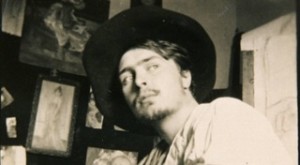 In 1913, the painter Rudolf Laban declared he was giving up art to pursue his interest in dance.
In 1913, the painter Rudolf Laban declared he was giving up art to pursue his interest in dance.
He did not really give up art, however. He continued to sketch and draw, using his graphic skills to study the evanescent shapes traced on space by the moving body.
Coming of age as a European artist during the transition from Art Nouveau to Abstract Expressionism gave Laban some powerful ideas and skills with which to study movement shapes. For example, Hermann Obrist, with whom Laban studied, admonished his students to understand natural objects as images “full of expressive forces, full of linear, plastic, constructive movements.”
Laban translated this understanding of expressive visual lines to the plastic shapes of dance. Find out how in the upcoming MoveScape Center workshop, “Mostly about Shape (and a little bit about Effort).”
